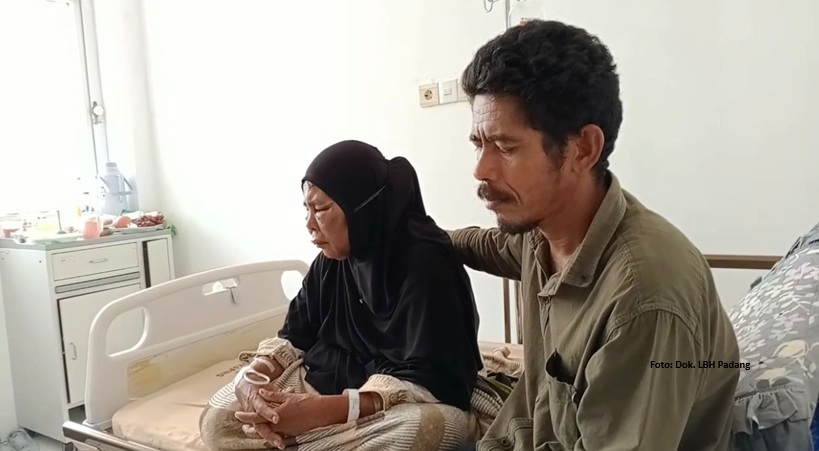
I was widowed at a fairly young age, and as a Muslim woman and single mother it was my responsibility to take my children — a son and a daughter — to the mosque on Fridays, to find solace and to pray.
However, each time I was forced to be separated from my son. He would go to the larger men’s prayer hall, while my daughter and I went to the separate women’s section. He was a child, and I had no way of knowing how or where he was until the prayer was over.
In the throngs of men exiting the prayer hall I would search for him. The stress and anxiety of being separated from him ultimately led me to stop going with them to the mosque for a period of time.
I’ve spent over half of my life studying the place and space of women in mosque architecture. My book, Beyond the Divide A Century of Canadian Mosque Design, documents 90 mosques across Canada and the spaces for women within them.
Also read: Why Some Muslim Women Feel Empowered Wearing Hijab?
Women in Mosques
The mosques I grew up using in Canada were very different from the historical ones, and the Grand Mosque in Mecca, that I visited as a young scholar. In the few Canadian mosques of my youth, the space for women was always a surprise and in constant flux: a side room, a basement, a backroom — always with a low ceiling, always with substandard finishes.
Yet, in the historical mosques I visited in Cairo, Istanbul, Tunis, Córdoba and elsewhere, I stepped into vast and full spaces where I could see it all, including the mihrab, the niche that indicates the direction of Mecca. If spaces were designated for women in these historical mosques, it was usually with makeshift and new materials: clearly more modern additions to centuries-old buildings that originally welcomed both genders without bifurcated spaces.
In Mecca, during my pilgrimage, I prayed and performed the rituals as Muslims have for over 1,400 years, without gender divisions.
That disconnect between the historical and modern was real and confusing. In the modern spaces where I should have found community, I found that I was architecturally subjugated.
When reading the Qur’an, men and women are called to bow before God in spaces of prostration. Not once does the Qur’an prescribe an architecturally separated space for women. In secondary sources, the Hadith, scholars over the centuries interpreted the actions of the Prophet Muhammed: there are examples of the Prophet asking men to lower their gaze, to arrange mixed gender groups in a certain way or to even shorten prayers to alleviate the discomfort of mothers tending to children.
The idea suggesting it is better for women to pray at home only came along late in the 13th century, as a cultural interpretation by Muslim jurist Ibn Jawzi — not a religious order. For the first millennium of the Islamic faith, mosques were constructed without gender separation. Ample historical texts document the presence of women scholars learning and teaching in mosque spaces.
In fact, the popularization of specifically designed separate women’s spaces in mosques only began in the Ottoman era. In the 15th century, with the conquering of Constantinople (modern-day Istanbul), the 1,000-year-old Byzantine church of Hagia Sophia was converted into a mosque.
Hagia Sophia, like many other Byzantine churches, had distinctive separate spaces for women to pray in — including the balcony, or gynaeceum; an element that was not carried over in subsequent eras of church design. Ottoman mosques post-Hagia Sophia were constructed using many Byzantine elements, including the dome most associated with mosques today. Among these elements, was also the separate balcony space of some proportion or size reserved for women.
Also read: ‘Green Ramadan’ Revives Islam’s Long Tradition of Sustainability and Care for the Planet
Mosques in Canada
Over the course of my research, I’ve travelled to and examined 90 mosques in 53 cities across Canada — from Victoria to St. John’s to Inuvik and Iqaluit. I interviewed mosque patrons, board members and designers. I photographed each mosque space (exterior and interior), created architectural drawings (with my research assistants) that noted gender demarcation and learned the history of each space.
In most mosques I was welcomed wholeheartedly. In others, I was met with trepidation or doubt. Overall, my academic credentials neutralized my gender and “allowed” me access to male spaces. Meanwhile my gender allowed me entry and use of women’s spaces that are almost never discussed or analyzed in architecture texts.
Women’s spaces in Canadian mosques range from having a full view of the main prayer hall, to some view to none. In the mosques I studied, only around 15 per cent afforded women a full view of the main space, just under 40 per cent some view and the remaining 46 per cent afforded women no view at all.
Women in Canada (and many other parts of the world) frequently enter mosques unsure of what kind of space awaits them. Will there be reasonable room to pray? Will the space be well-lit and maintained? These questions limit inclusion and pose a serious social and architectural problem.
Architects and designers may hesitate to question a mosque design brief given to them from fear of being insensitive, but accepting a brief to design spaces that treat members of the community unequally is a problem and requires professional critique. If an architect was asked to design a gym or library where women could only access a quarter of the space with poorer quality furnishings, would the architect not question this?
Also read: Understanding Quran as an Ecumenical Manuscript: A Reformist’s Take
Building codes regulate the baseline of expectations for spaces, however none exist regarding the gendering of sacred spaces — thus the extreme range is possible: from minuscule and poor allocation to unbarred equal space. Architects and communities, in dialogue, must understand what the impact of architectural decisions are.
Mosques with walls, barriers and separated entrances all send a clear message to Muslim women: these spaces are not designed to include us. For mosques to remain spaces that are relevant and important to younger generations, they must adapt and learn from the historical non-gendered norms. Attendance and participation cannot be sustained under such conditions — especially by younger people who find themselves equal everywhere else but the mosque.
Mosques without gender separation have more engagement from all members of the community. These mosques function like community hubs and are active throughout the week for a wide range of community activities.
In early 2023, I was asked to join as an architecture of Islam design consultant on a large mosque and school project in Edmonton. The school and mosque will accommodate 1,500 to 2,000 people. The community has been positively engaged in the design process, with students, teachers, parents and others who will use the mosque sharing their input on the project: one designed without gender division and with consideration for a range of issues relevant to the community and area.
Instead of searching for our children on the other side of an impenetrable wall, we can start creating the kinds of mosques where all are welcome and wish to return.
Tammy Gaber, Director, McEwen School of Architecture, Laurentian University.
This article was first published on The Conversation, a global media resource that provides cutting edge ideas and people who know what they are talking about.






















